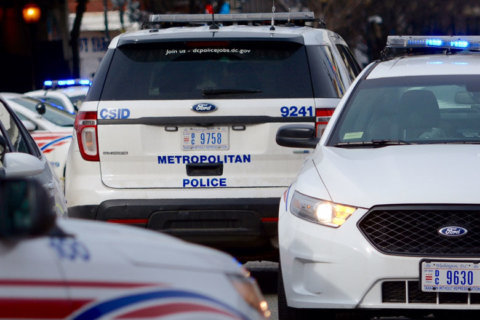The numbers are heading in the right direction, but businesses in downtown D.C. continue to struggle during the pandemic.
“The economic activity in downtown has improved since July, but it remains substantially below last year,” said Gerry Widdicombe, director of economic development of Downtown D.C. Business Improvement District.
Guidance for visitors not to travel and calls for employers to allow telework during the peak of the pandemic led to the decline.
According to a report by the Downtown BID, the daytime population, which includes workers and tourists, is down from 256,000 in February to 47,000 in October, though the number is up from 35,000 in July.
Retail vacancies hit a new high of 18% in October. At the end of 2019, the number stood at 12%.
“A lot of this is due to national bankruptcies, whether its Bed Bath and Beyond or Jos. A. Bank, and a couple restaurant closings,” Widdicombe said in a virtual discussion with industry leaders Thursday.
Sales in October for the 95% of downtown retail locations that are open was at 40% to 60% of levels seen this time last year.
Hotels continue to be hard hit by the pandemic, with revenue down by 91% in the third quarter compared to the same period last year.
D.C. hotels depend largely on tourism and without it saw only 12% of rooms booked in September, though the number is up from 3% in April. Still, the numbers are a far cry from a 74% occupancy rate in February of this year.
Widdicombe said both the pandemic and the many demonstrations seen in D.C. this year affected the numbers.
When discussing regional restaurant sales, he said the numbers get better the further you are from downtown.
“The further you get away from the office market and the hotel market, which are affected from the pandemic, and the further you get away from what I call the demonstration shadow,” Widdicombe said.
Restaurants in September saw 30% to 50% of the sales they saw during the same time last year. Also several restaurants closed their doors, including Billy Goat Tavern, Bar Louie and Olivia.
One thing hurting restaurants is fewer workers going into the office. In October, only 10% of downtown workers came into the office. Office vacancy rates have risen during the pandemic, and the third quarter saw no office sales in downtown.
With regard to employment, D.C.’s downtown saw 7,000 jobs cut, due mostly to closures and lower sales at the area’s theaters, restaurants, stores and hotels.
The strongest numbers were seen in the housing sector. During the third third quarter, 88% of downtown D.C.’s apartments and condominiums were occupied.
Widdicombe said some positive news could come from new development — the area has 19 development projects, including four hotels, in the works. The time table for those projects remains uncertain.
- Sign up for WTOP alerts
- Latest coronavirus test results in DC, Maryland and Virginia
- Gas retailer accused of overcharging customers at DC gas stations
- ‘Time to hunker down’: Md. counties tighten COVID-19 restrictions amid surge
- Bowser concerned DC not being ‘vigilant’ as COVID cases rise; new restrictions possible
Looking for more information? D.C., Maryland and Virginia are each releasing more data every day. Visit their official sites here: Virginia | Maryland | D.C.








